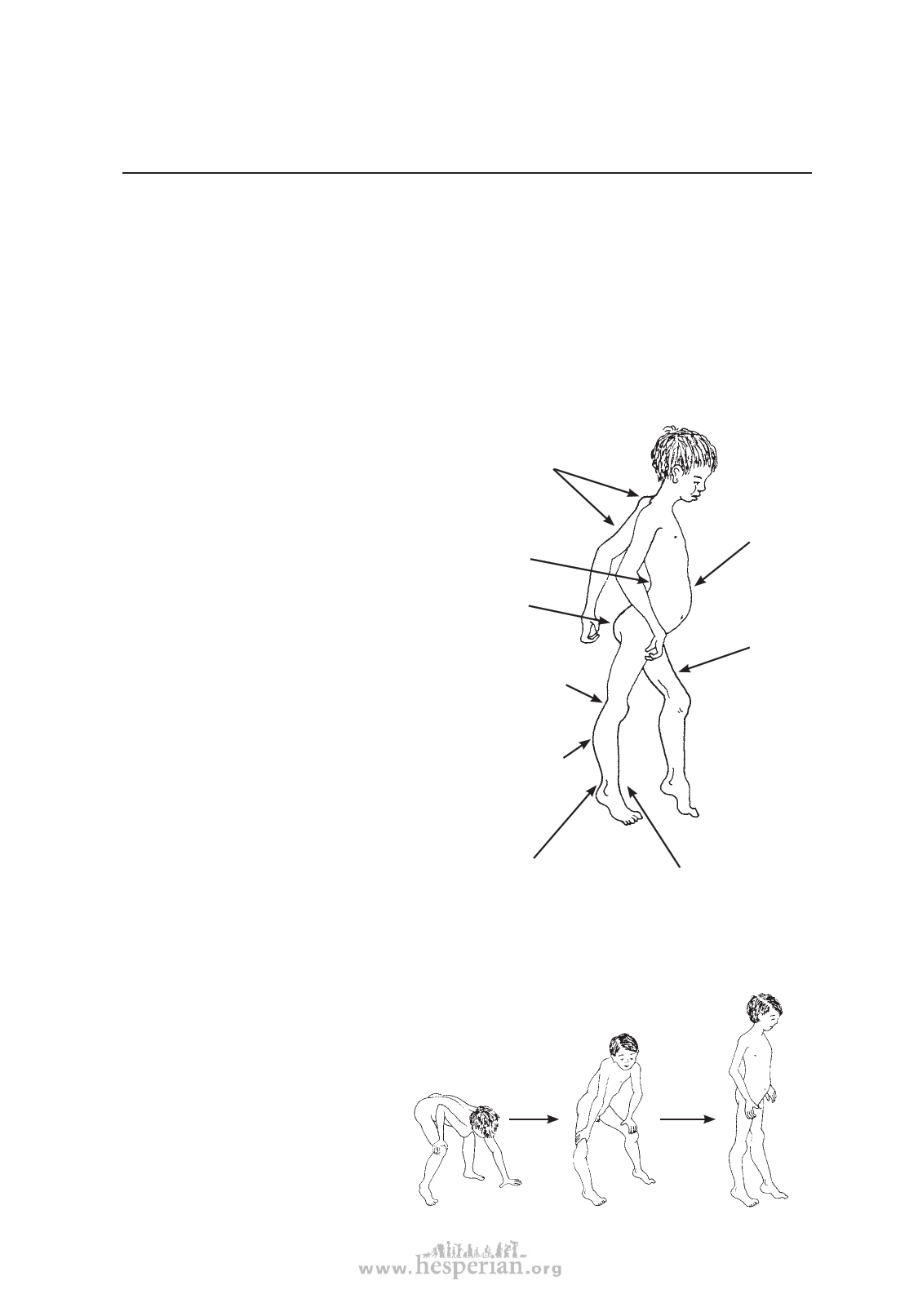
Muscular Dystrophy
Gradual, Progressive Muscle Loss
10CHAPTER
109
Muscular dystrophy is a condition in which muscles, month by month and year by
year, get weaker and weaker. Because the disability gradually gets worse, we say it is
‘progressive’.
HOW TO RECOGNIZE IF MUSCLE WEAKNESS IS CAUSED BY
MUSCULAR DYSTROPHY
• Mostly affects boys (rarely girls).
• Often brothers or male relatives have
same problem.
• First signs appear around ages 3 to
5: the child may seem awkward or
clumsy, or he begins to walk ‘tiptoe’
because he cannot put his feet flat.
Runs strangely. Falls often.
• Problem gets steadily worse over the
next several years.
• Muscle weakness first affects feet,
fronts of thighs, hips, belly, shoulders,
and elbows. Later, it affects hands,
face, and neck muscles.
• Most children become unable to walk
by age 10.
• May develop a severe curve of the
spine.
• Heart and breathing muscles also get
weak. Child usually dies before age 20
from heart failure or pneumonia.
shoulders and
arms are held
back awkwardly
when walking
swayback
weak butt
muscles (hip
straighteners)
Knees may bend
back to take
weight.
thick lower leg
muscles (the
‘muscle’ is
mostly fat,
and not strong)
tight heel cord
(contracture);
child may walk
on toes
belly sticks
out due to
weak belly
muscles
(child is poor
at sit-ups)
thin, weak
thighs
(especially
front part)
poor
balance;
falls
often
awkward,
clumsy if
walking
Weak muscles in
front of leg cause
‘foot drop’ and
tiptoe contractures.
Early common sign of muscular dystrophy
• To get up from the ground,
the child ‘walks up’ his
thighs with his hands.
• This is mainly because of
weak thigh muscles.